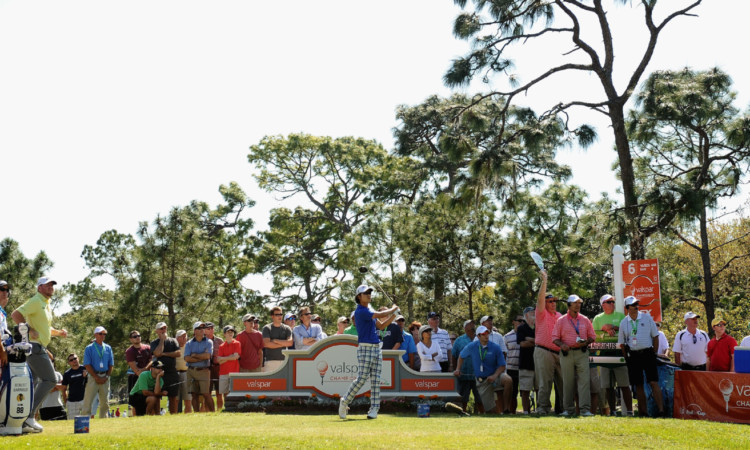Two years on from when he became the lightning rod for the slow play issue in golf, Kevin Na is not much quicker. And nothing has really been done about slow play on the PGA Tour.
Since Na’s antics at the Players Championship of 2012 provoked wonder, condemnation and somehow sympathy for his intolerable mixture of unnecessary practice strokes and twitches, the R&A and USGA have clamped down on slow play, recognising as they do that rounds of golf that take the majority of a day to complete are a huge turn-off for people who might otherwise play.
The R&A started actively pursuing slowpokes at its championships including a Saturday purge at the Open at Muirfield last year that snared Hideki Matsuyama taking two and a half minutes to hit a routine shot.
The USGA, with their “While We’re Young” campaign (as in, `will you actually hit that shot while we’re young?’) have used the example of great names like Woods, Palmer and Sorenstam to concentrate on speeding up ordinary golfers.
The European Tour has clamped down and docked strokes. The LPGA and LET clamped down and docked strokes. The Masters, although it was a 14-year-old they caught, clamped down and docked strokes.
But given Na’s performance at the Valspar Championship at the weekend, there is still no action from the PGA Tour, the major shop window of the game. Indeed, there’s actually been the opposite.
The clearest manifestation of this is obseqiuous journalists apparently determined to curry favour and be unquestioning of some prominent players (have they learned nothing from their dealings with Tiger Woods this last 20 years?) now actively stating that dealing with slow play is no different than dealing with a ball in a divot.
Na’s antics are then protrayed as a battle against some sort of obsessive compulsive disorder, and that he’s actually to be ADMIRED for taking an outrageous and unnecessary amount of time to play the game.
These patsies are buying this spurious sob story from Na hook, line and sinker, and because it’s fairly clear now that the slow players within the PGA Tour are actively opposed to any action or penalty being imposed on them.
Thus Commissioner Tim Finchem who remember, is merely a tool of the PGA Tour policy board will not budge on any action at all.
The frustration with the intransigence of the slowpokes and their power over policy is beginning to spill over. Robert Garrigus, a quick player who had to tolerate Na at the weekend, was clearly furious and his caddie’s comment that “playing with Kevin Na isn’t fair” underlined it.
Brandt Snedeker, the all-round good guy and one of the quickest players in all of golf, admitted that he now tries to ensure slowpokes are “caught” by intentionally slowing down in the hope they get put on the clock.
Na may be a nice lad, as everyone seems to think. But he’s appallingly selfish in reducing play to a crawl for no other benefit but his own, showing a complete lack of courtesy for his fellow competitors. If he can’t bring himself to hit, it’s no different than the yips. Cure it or get out of golf.
As for the PGA Tour’s stonewalling, there’s an easier way to stop that than introducing a basketball-style shot clock, which the policy board are fervently resisting anyway.
Isolate them.
The Tour, much to their chagrin, don’t control a major. This year the Masters will fall into line with every other major in having a referee out with every group.
All the refs have a stopwatch so they can put everyone on the clock, all the time, as suggested last summer by Colin Montgomerie. From the time their name is announced on the first tee to the time they hole out at the 18th, the stopwatch would be running.
This method would also clarify which player was responsible for a bad time, and also when occurrences of slow play were due to acceptable in-game reasons or otherwise outwith the playing group’s control.
The result would be at the very least a decent pace of play would be essential to perform in the four biggest tournaments of the year.
And once established at the top of the game, it would simply have to trickle down to the tour. Because slowpokes, one assumes, want to win majors too.
